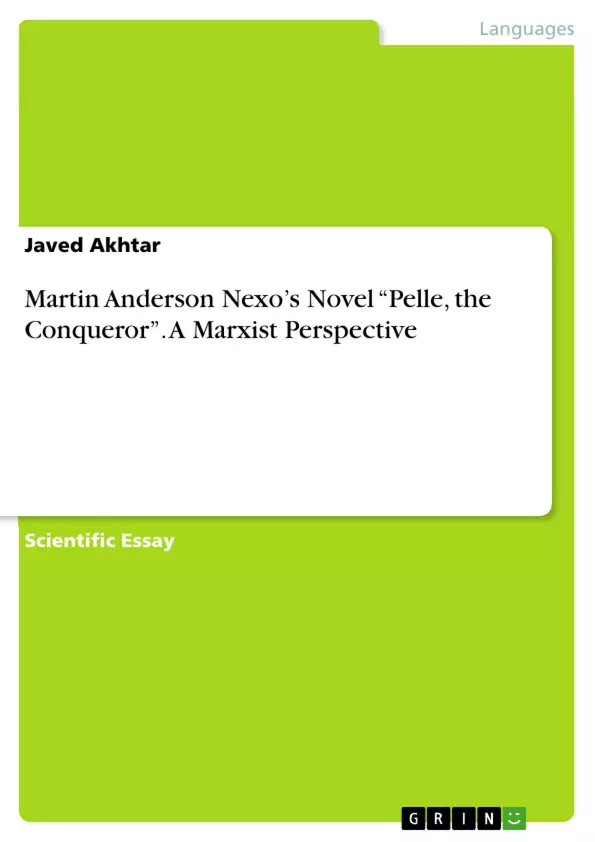The purpose of this research paper is to conduct a textual analysis of this novel, as a research method on the bedrock of Marxist literary hermeneutics in an innovative and new way, tracing the all-round development of Pelle’s personality who succeeded to organise his fellow-proletarians on the platform of the Corporative movement, trade union and socialist revolutionary movement. He founded the garden-city for the betterment of his fellow-proletarian comrades.
Martin Andersen Nexo was the most eminent Danish Marxist proletarian fiction writer of the twentieth century. He came from the working-class family background and wrote short stories, novels and essays about the plights and sufferings of the proletariat class. His novel “Pelle, the Conqueror” (1906) is one of the greatest proletariat novels in world literature. Pelle, the protagonist of the novel emerged as the self-realised and class-conscious proletarian leader from the obscurity, drudgery and poverty of his rural peasant and shepherd background. He was a common labouring lad, who served as a herd, shoemaker's apprentice and qualified shoemaker.
The novel enjoyed enormous success and popularity that conquered the hearts of the proletarians and peasants of the world. The novel is also neglected in academia, criticism, literature and the world of research.
Inhaltsverzeichnis (Table of Contents)
- Introduction
- Literature Review
- Debate and Discussion
- Conclusion
- References
Zielsetzung und Themenschwerpunkte (Objectives and Key Themes)
This research paper aims to conduct a textual analysis of Martin Andersen Nexo's novel "Pelle, the Conqueror" (1906) through the lens of Marxist literary hermeneutics. It explores the development of Pelle's personality as a self-realised and class-conscious proletarian leader, highlighting his role in organizing fellow workers and advocating for social change through the Corporative movement, trade unions, and socialist revolutionary movements.
- The portrayal of the proletariat class and their struggles for social justice
- The evolution of Pelle's character from an ordinary worker to a revolutionary leader
- The influence of Marxist ideology on Nexo's writing and its reflection in "Pelle, the Conqueror"
- The exploration of social realism and its impact on the depiction of poverty, exploitation, and class conflict
- The novel's historical context and its relevance to contemporary social issues
Zusammenfassung der Kapitel (Chapter Summaries)
The introduction provides a detailed account of Nexo's life and career, highlighting his early experiences and political evolution. The literature review delves into critical analyses of "Pelle, the Conqueror," examining existing scholarship and interpretations of the novel's themes and characters. The "Debate and Discussion" section analyzes the novel's depiction of class conflict and its significance in the context of Nexo's political views and the wider social and political landscape of his time.
Schlüsselwörter (Keywords)
The main keywords and focus topics of this paper include: proletarian leader, social realism, Marxism, socialist revolution, Corporative movement, trade unions, "Pelle, the Conqueror," Martin Andersen Nexo, textual analysis, literary hermeneutics.
- Quote paper
- Javed Akhtar (Author), 2017, Martin Anderson Nexo’s Novel “Pelle, the Conqueror”. A Marxist Perspective, Munich, GRIN Verlag, https://www.grin.com/document/354272



